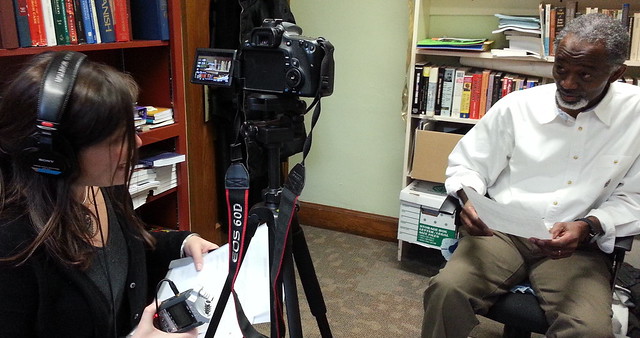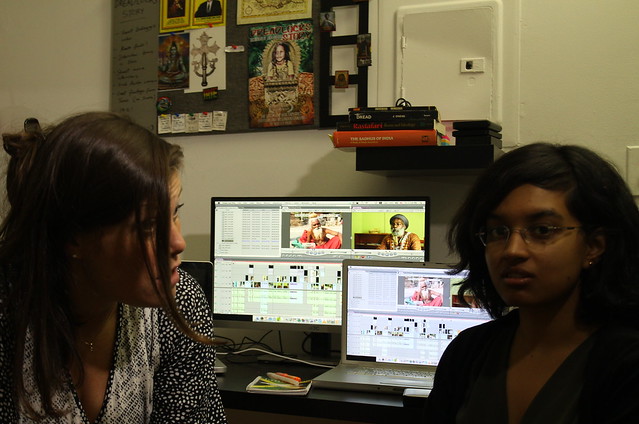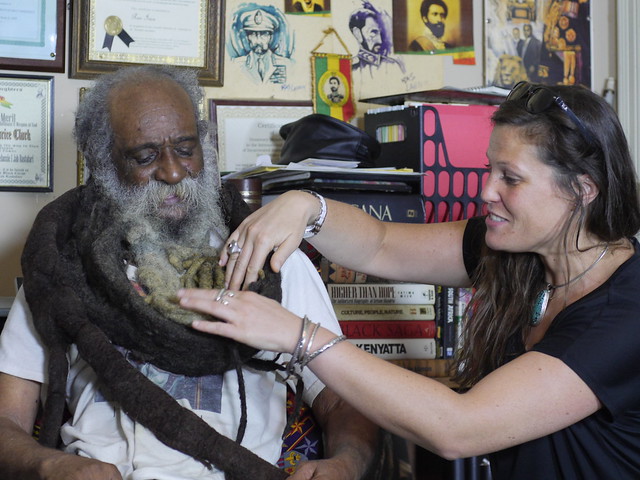By Vinay Bhat, TwoCircles.net
Linda Anouche a New York based anthropologist talks to Vinay Bhat about her upcoming documentary film Dreadlock Story which charts out the common cultural traits between Rastafaris in Jamaica and Hindus in India.
Q. Tell us something about yourself
Linda: I was born in France and have since the past few years ended up in New York. I am an Anthropologist, and I have always been interested working among communities whose cultural history has been misunderstood. Documentaries are a great way of exhibiting cultural aspects. They perfectly complement anthropology. I have enjoyed the process of making this documentary Dreadlock Story, even though documentary making takes a lot of research and effort, and especially patience and tact when it comes to rebellious and religious people.

Q. What was your inspiration behind Dreadlock Story?
Linda: I have lived in the past with the Jains in India and keep working on Indian religions. I have also stayed in Jamaica and therefore got deeply acquainted with Jamaican culture. I always knew the connection between Rastafari and Hinduism because it seemed so obvious when we quickly examine both of them. There is also a historical aspect of connection between the Africans and Indians in the Caribbean. Indians and Africans met in the plantations. From this meeting, a unique culture emerged to express the mode of resistance against British oppression. Dreadlocks were one of the features of this new culture. I wanted to use the dreadlocks, the matted hair, as a tool to talk about this historical artifact. I wanted to open the window of this historical page through the medium of hair. Also because I am a woman I am taking greater pleasure in depicting this Rasta culture in giving a voice to women who embrace it. There are a lot of sexist aspects within this as well. Historically though without the African and Indian women Rasta culture would maybe not have existed.
DREADLOCKS STORY – Indiegogo crowdfunding campaign from Linda Aïnouche on Vimeo.
Q. Tell me a little bit more about the history of Indians in the Caribbean.
The British moved Indians from all over the subcontinent without any discrimination of religions into these plantations. About in Jamaica, the census reported Hindus, Muslims, Christians, one Jain, and no Sikh, which does not mean that none was there either. In Kingston, the late Professor Ajai Mansingh is the first one who studied the connection between the Rastas and Indian culture and wrote a book called ‘Home Away From Home: 150 years of Indian presence in Jamaica’ with his wife Laxmi Mansingh. She still lives in Kingston along with their son. I have done two very relevant interviews with both of them for the film. I find in my travels that many around the world know about the dreadlocks but are unaware of the connection between Rastas and Hindus. I find even the Jamaicans are not really unaware of their historical past. They are more akin to thinking of the connection with Africa but either through ignorance or their unwillingness to accept they do not associate themselves with Indian culture. This is normal in my mind. It is if I may say a human self-defense mechanism. Each of us takes all the credit for what we are convinced. At the same time, they speak about beliefs regarding Africa and notably Ethiopia while I speak about way of life turning to India. In certain ways, we do not even talk about the same thing!

Q. Were there any things that did not turn the way you wished in the documentary?
I spoke to everyone I wanted including Sadhus in India and Rastas in Jamaica, which was a very difficult job. I am pretty satisfied with the way things have turned out. So far, I have done my best to realize a feat with a very little budget. I have been working in 4 countries (India, Jamaica, France, USA) in 4 languages (Hindi, Jamaican Patois, French, English) with 4 local crews. Needless to say that my flexibility has been tested and sharpened.
Q. Did you observe the practice of caste among the Hindus in the area?
Linda: Most of the Indians in the Caribbean who have lived for generations have been forced to convert to Christianity. Also most of them who were brought to the Caribbean belonged to the same laboring classes. Due to this I have not observed the practice of caste at all.

Q. When does the film release and what is your hope from the film?
Linda: I am hoping it will release by the end of winter. There are many things that can come out from this film and it opens up other possibilities for me. But I am hopeful that it reaches as many people as possible and can educate them about the connections between Jamaican and Indian culture. I have been already invited by many universities and countries like India, Jamaica and even Italy. So I am hoping for the best.
Q. Is there anything else you would like to tell the readers?
Linda: In the coming days we will be launching a crowd funding campaign online to fund the post-production? For those who want to get involved they can take a look at Indiegogo.





